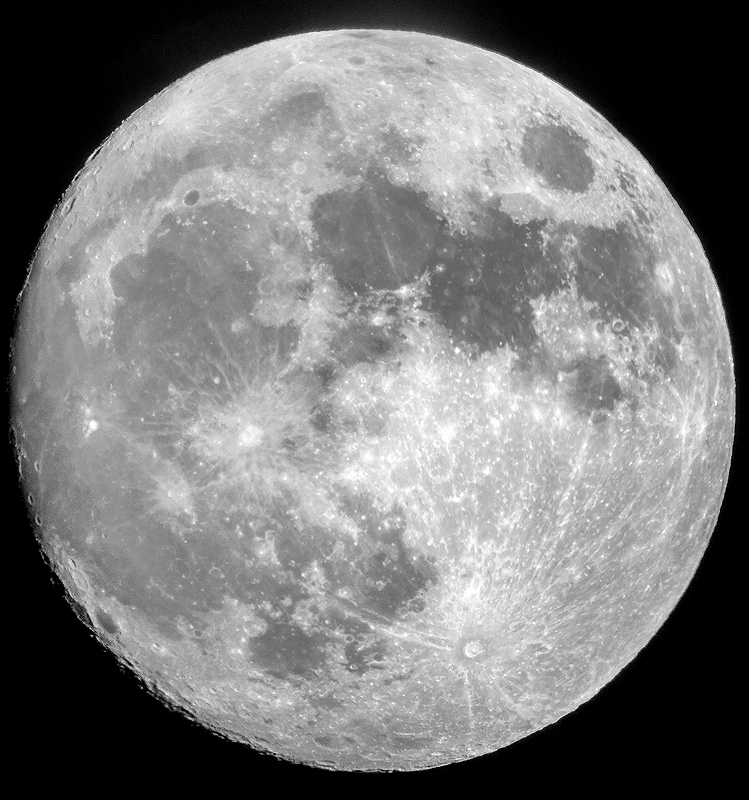Short Session, iPhone Moon
Posted: 29 November 2020
|
Open: Saturday, 28 November 2020, 1725 MST Temperature: 66°F |
Session: 1562 Conditions: Clear |
Equipment:
12" f/8 LX600 w/StarLock
2" 24mm UWA eyepiece
Camera:
iPhone 11 Pro Max
1733 MST: LX600 ON, StarLock OFF, High Precision OFF.
The telescope Declination axis had slipped by several degrees during my daytime solar observing session, so after doing a GOTO to Jupiter I manually moved the telescope in Declination to center the planet. Once that was done I viewed Jupiter with the four Galilean moons visible against the bright twilight sky, 102X. I then viewed Saturn, 102X. None of its moons were visible in the bright sky.
Next, I SYNCed on the star Markab to correct for the DEC axis slippage.
I then SYNCed the observatory clock to WWV time signals.
1747 MST: viewed Mars, 102X.
The Moon had risen high enough over the hill to the east by now so I viewed it, 102X.
I handheld the iPhone 11 Pro Max over the eyepiece for this afocal 102X photo taken with NightCap Camera (ISO 32, 1/710sec, 1X lens).

1759 MST: last look at the Moon, 102X.
1800 MST: LX600 OFF.
|
Close: Saturday, 28 November 2020, 1807 MST Temperature: 58°F |
Session Length: 0h 42m Conditions: Clear |
Comments are welcome using Email. Twitter users can use the button below to tweet this report to their followers. Thanks.
Cassiopeia Observatory Home Page
Copyright ©2020 Michael L. Weasner / mweasner@me.com
URL = http://www.weasner.com/co/Reports/2020/11/29/index.html
